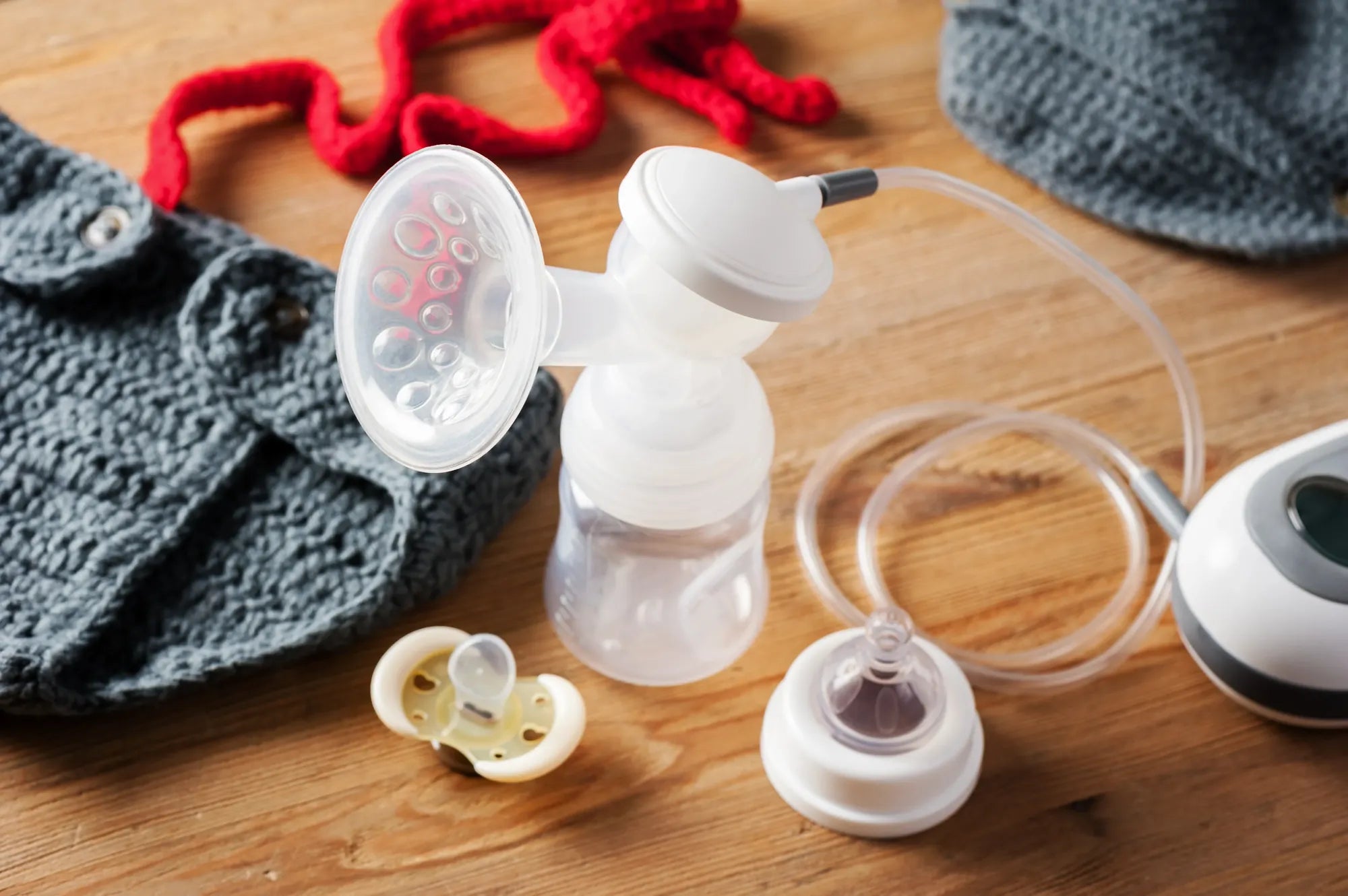Home
Pregnancy, Breastfeeding, and Pumping: The Ultimate Guide for Moms
Can Mold in Breast Pump Tubing Harm Baby? What Parents Need to Know

Can Mold in Breast Pump Tubing Harm Baby? What Parents Need to Know
As a parent, ensuring your baby's safety and health is always a top priority. One area that often goes overlooked is the cleanliness of breast pump equipment, particularly the tubing. The question 'Can mold in breast pump tubing harm baby?' is a valid concern that deserves attention. Mold growth in breast pump tubing can pose serious health risks to both the mother and the baby, making it crucial to understand the potential dangers and how to prevent them.
Understanding the Risks of Mold in Breast Pump Tubing
Mold thrives in damp, dark environments, making breast pump tubing an ideal breeding ground if not properly maintained. When mold grows in the tubing, it can release spores into the air, which may then be inhaled by the baby during feeding. Inhaling mold spores can lead to respiratory issues, allergies, and even infections, particularly in infants whose immune systems are still developing.
Moreover, if mold contaminates the breast milk, it can introduce harmful bacteria or toxins into the baby's digestive system. This can result in gastrointestinal problems, such as diarrhea, vomiting, and abdominal pain. In severe cases, mold exposure can lead to more serious health complications, including fungal infections.
How Mold Develops in Breast Pump Tubing
Mold development in breast pump tubing is often a result of improper cleaning and storage practices. After each use, moisture can remain trapped in the tubing, creating a perfect environment for mold to grow. Additionally, if the tubing is not dried thoroughly or stored in a humid area, the risk of mold increases significantly.
It's also important to note that some breast pump tubing designs may be more prone to mold growth than others. Tubing with multiple bends or crevices can trap moisture and milk residue, making it harder to clean and more susceptible to mold.
Preventing Mold Growth in Breast Pump Tubing
Preventing mold in breast pump tubing starts with proper cleaning and maintenance. Here are some essential tips to keep your breast pump equipment mold-free:
- Clean the tubing immediately after each use. Rinse it thoroughly with warm water to remove any milk residue.
- Use a mild soap or a cleaning solution specifically designed for breast pump parts. Avoid harsh chemicals that could leave harmful residues.
- Ensure the tubing is completely dry before storing it. You can use a clean towel to wipe it down or let it air dry in a well-ventilated area.
- Store the tubing in a clean, dry place. Avoid storing it in areas with high humidity, such as bathrooms or kitchens.
- Regularly inspect the tubing for signs of mold or wear and tear. Replace the tubing if you notice any discoloration, foul odors, or visible mold growth.
What to Do If You Discover Mold in Breast Pump Tubing
If you find mold in your breast pump tubing, it's important to take immediate action to protect your baby's health. Here's what you should do:
- Stop using the breast pump immediately. Continued use of contaminated tubing can expose your baby to harmful mold spores.
- Thoroughly clean all parts of the breast pump, including the tubing, using hot, soapy water. You may also consider using a vinegar solution to help kill any remaining mold spores.
- Inspect the tubing carefully. If the mold growth is extensive or if the tubing is damaged, it's best to replace it entirely.
- Consult with a healthcare professional if you suspect your baby has been exposed to mold. They can provide guidance on any necessary medical interventions or monitoring.
The Importance of Regular Maintenance and Replacement
Regular maintenance and timely replacement of breast pump tubing are essential to prevent mold growth and ensure the safety of your baby. Over time, even with proper cleaning, tubing can become worn out and more susceptible to mold. It's recommended to replace breast pump tubing every few months or as soon as you notice any signs of damage or contamination.
Investing in high-quality tubing and following the manufacturer's guidelines for cleaning and maintenance can also help reduce the risk of mold. Remember, the health and safety of your baby are worth the extra effort and attention to detail.
Creating a Safe Breastfeeding Environment
Creating a safe breastfeeding environment goes beyond just keeping the breast pump equipment clean. It's important to maintain overall hygiene in the areas where you prepare and store breast milk. Wash your hands thoroughly before handling breast pump parts or expressing milk, and ensure that all surfaces and containers used for milk storage are clean and sanitized.
Additionally, consider using a breast pump with a closed system design, which helps prevent milk from entering the tubing and reduces the risk of mold growth. While no system is entirely foolproof, taking these precautions can significantly lower the chances of mold contamination.
Educating Yourself and Seeking Support
As a parent, it's important to educate yourself about the potential risks associated with breast pump equipment and how to mitigate them. Don't hesitate to seek support from healthcare professionals, lactation consultants, or parenting groups if you have concerns or questions about breastfeeding and breast pump maintenance.
Remember, you're not alone in this journey. Many parents face similar challenges, and there are resources available to help you navigate the complexities of breastfeeding and ensure your baby's health and well-being.
By staying informed and proactive, you can minimize the risk of mold in breast pump tubing and provide a safe, healthy feeding experience for your baby. Your vigilance and care make all the difference in protecting your little one from potential harm.
Share

